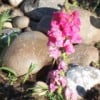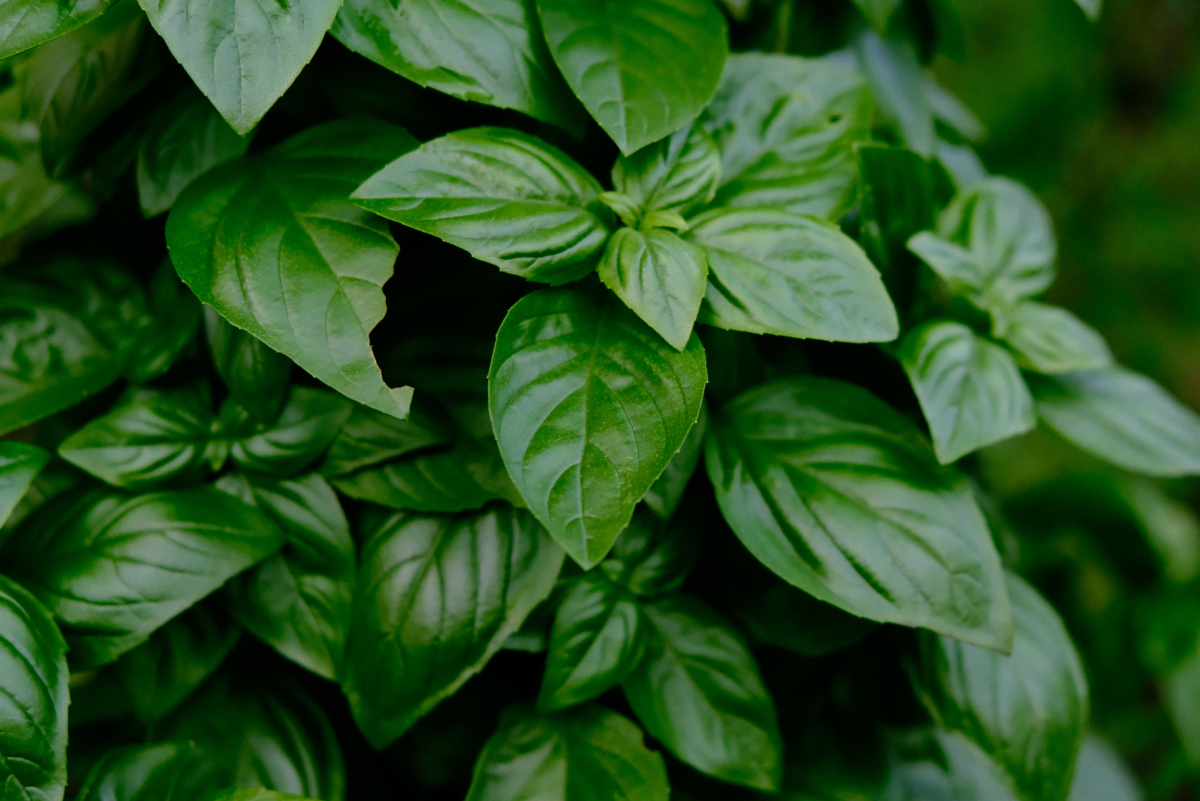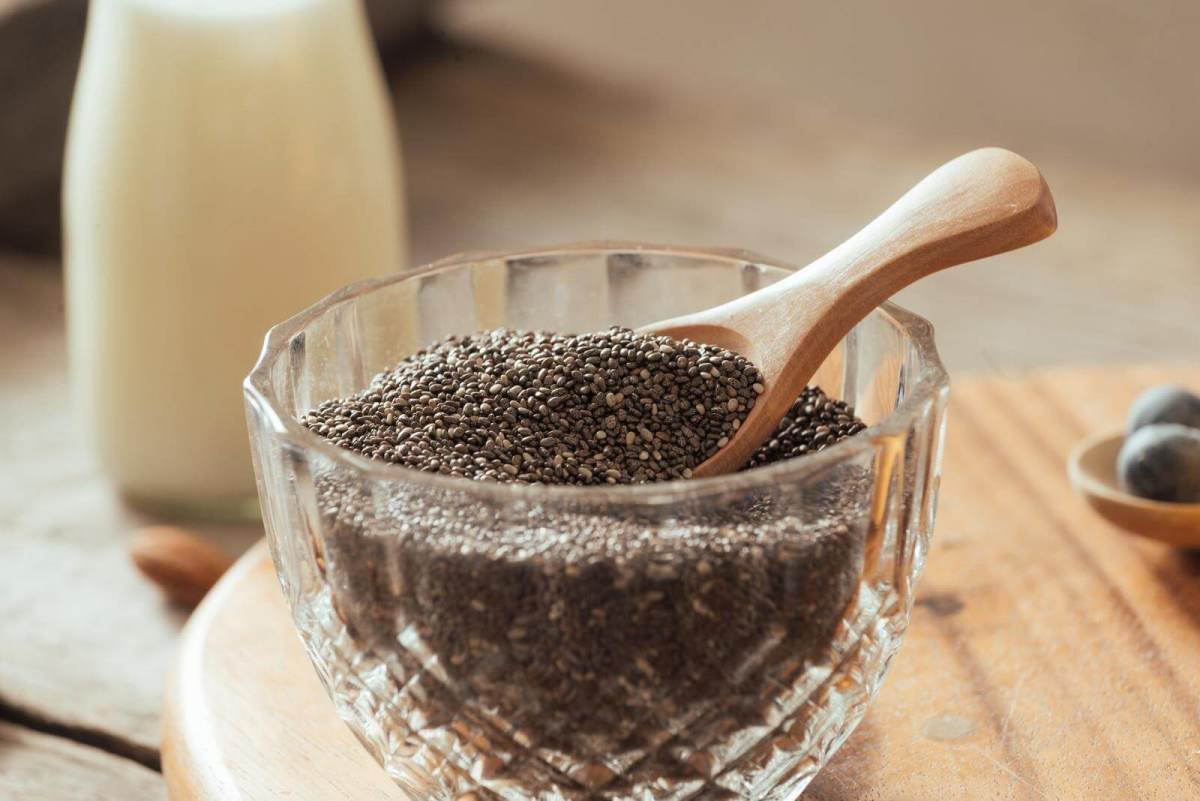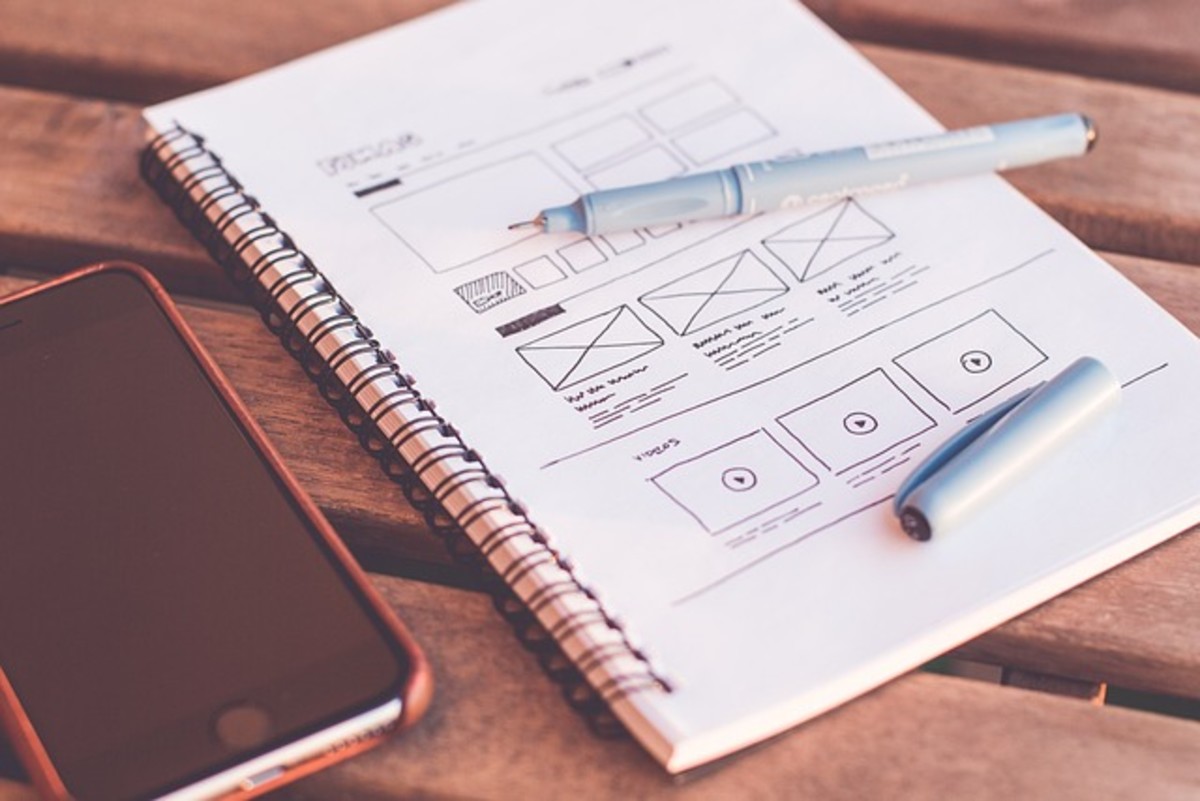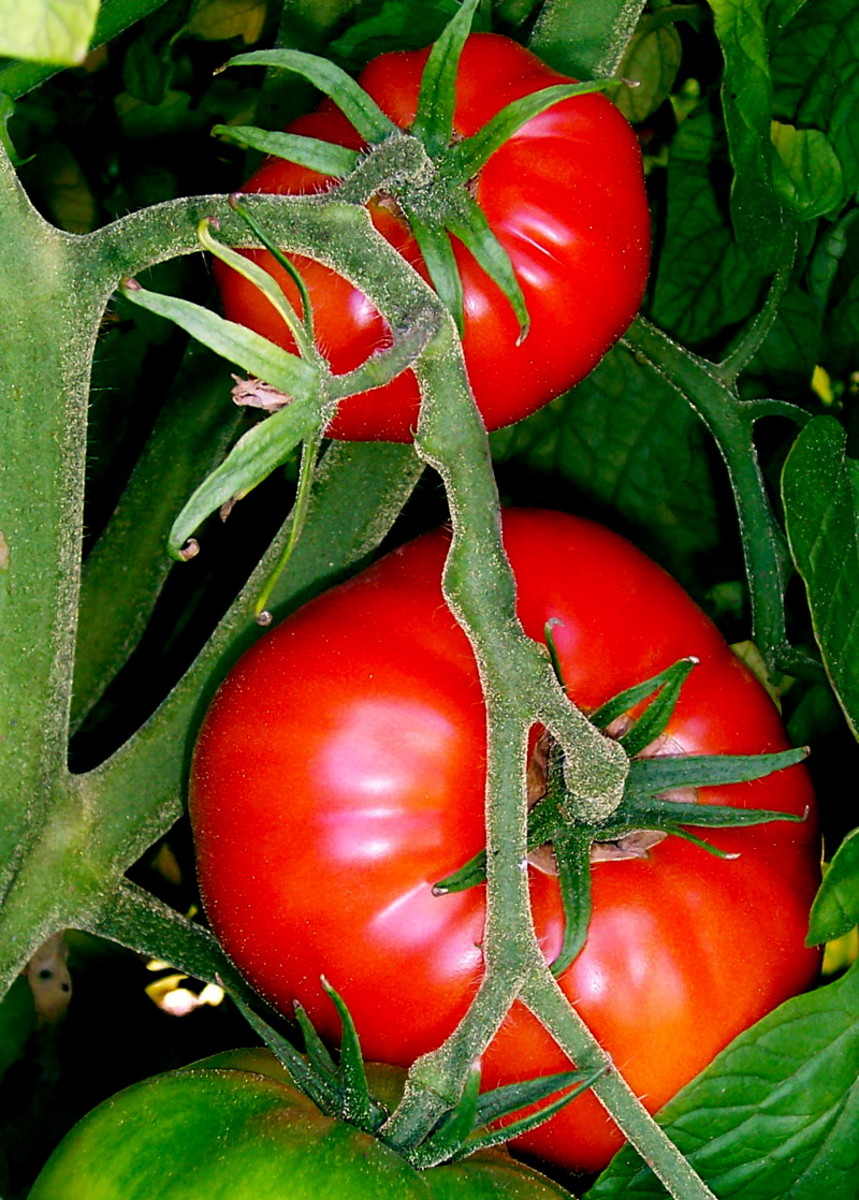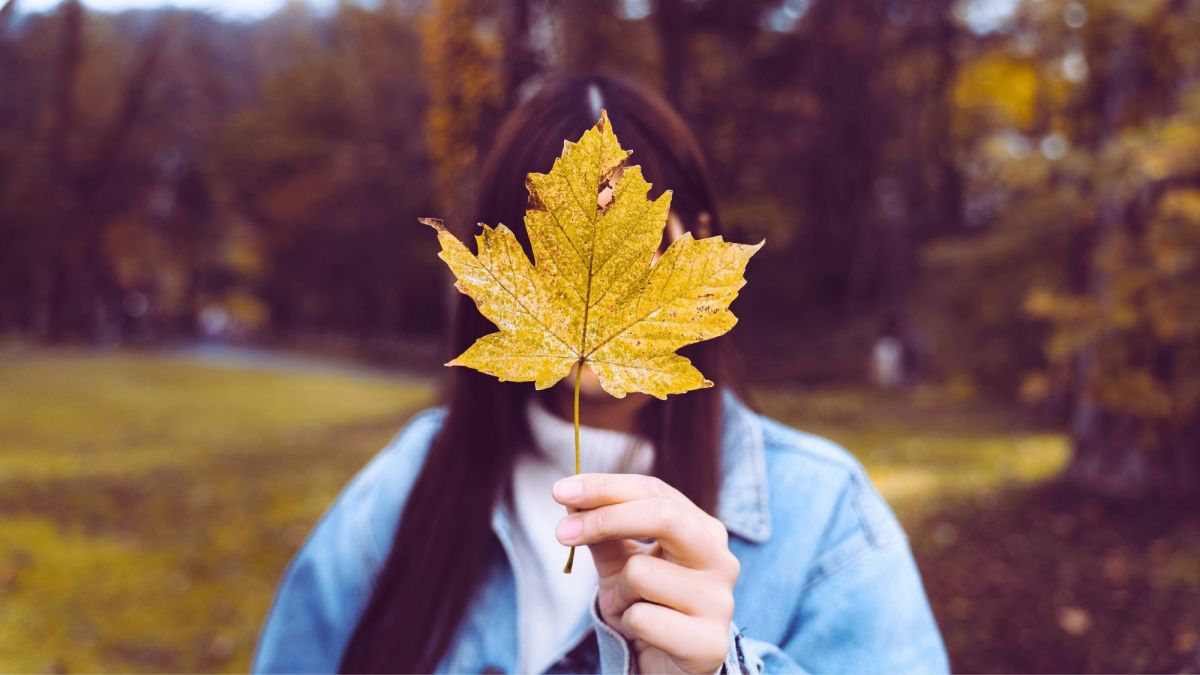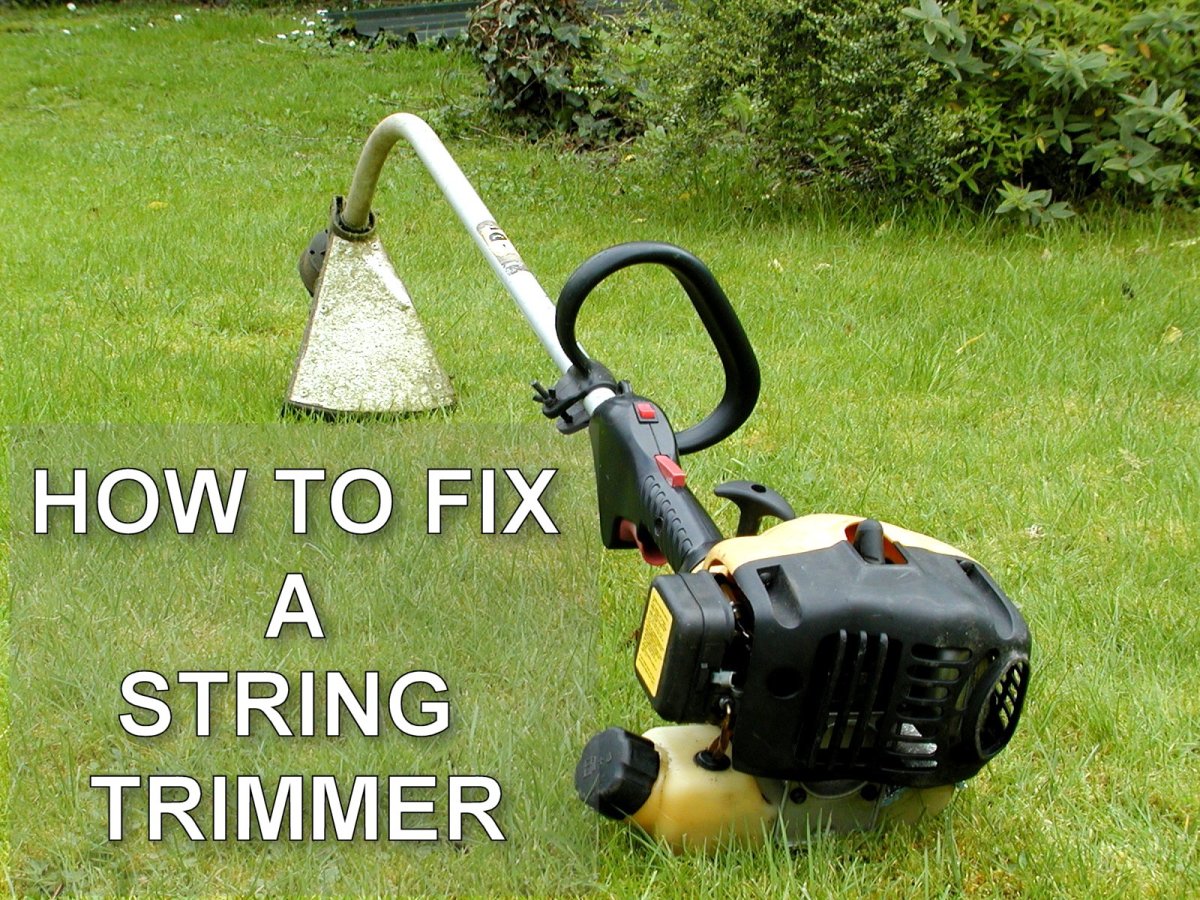Gardening Tips for Busy People: Easy Garden Cleanup Project
Allyssum: A Low-Growing, Colorful Annual Garden Filler
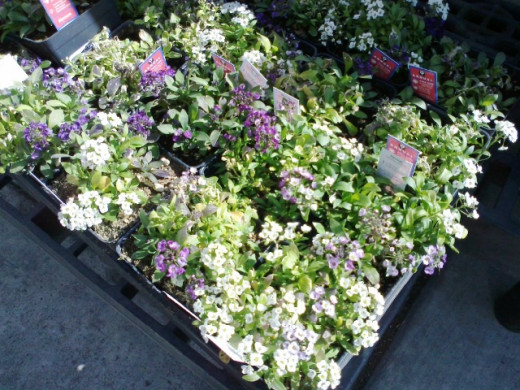
How Does Your Garden Grow?
When you make your garden plan, do you...
Garden Clean Up Project Plan Day Two
Multiple Easy Garden Tasks. Today, the plan will focus on organizing the space into sections, smoothing and turning the soil, laying the cardboard weed barrier beneath the carpet strips, and planting both seeds and bedding plants.
We are all busy people, and this probably sounds like a lot of work, but it really isn't. This raised garden bed has a total of 192 square feet of gardening space. However, the area around the pond, which is 8 feet by 8 feet, is filled up with the pond, and the perennial plants around it such as sage, stone crop, irises, strawberries, and the bachelor buttons. Since that was cleaned out and shaped up on day one, and the raspberries take up quite a bit of space on the other end, the remaining space is not that large.
In fact, as you will see, it is really quite small in comparison to many other vegetable and fruit gardens.
Next we review the basic outline for today's project.
The Main Tasks:
- Work the Soil and Rake it Smooth. Because it is a small area, this task will go fast.
- Lay the Cardboard Weed Barrier. This doesn't take but about 10 minutes even if you go slow.
- Planting Bedding Plants. Today I am going to plant a few bedding plants. Just a few alyssum plants in white and purple around the front of the fountain, and a cucumber bedding plant, and one bush bean plant.
- Plant Garden Seed. Along with those plants, I will plant some carrot and corn seed. The carrots should emerge in about three weeks, and the corn will usually come up in about two weeks.
Time to Complete Project. Not counting the trip to the garden center, the actual working time was about three hours. It took about 15 minutes to work the space for the carrots and plant the seed. It was about the same amount of time to do the corn. It took about an hour to turn the soil, place the cardboard weed barriers and smooth the soil. The rest of the work time was spent planting the bedding plants and giving them their first drink of water.
Turning and Smoothing the Garden Soil
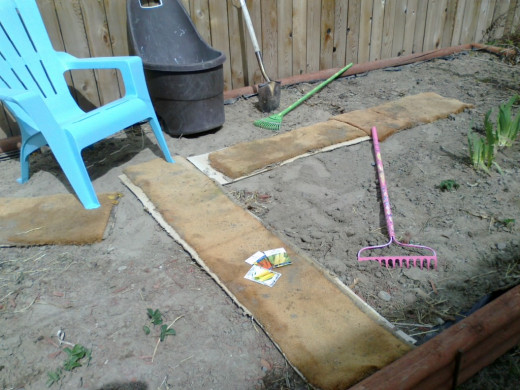
Raspberries Pruned to Make Way for New Plants
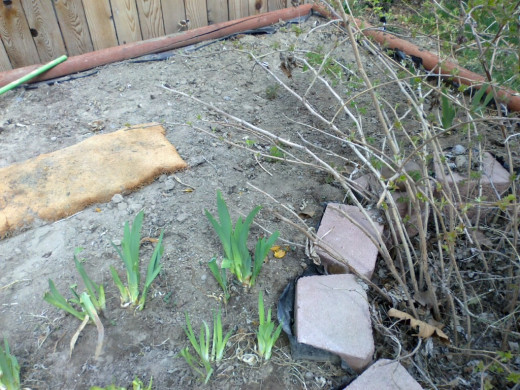
Cultivating the Garden Soil
Because this is a relatively small garden space, I opt to turn and work the soil with a garden spade. For me, it would be more work to get out a rototiller and get it started and up into the garden bed. I just grab the shovel and work one section at a time, turning the earth, jabbing the big clumps to break them up, and moving on to the next section.
After working the soil, I raked it to smooth it. Then, while the carpet strips were out of the way, I laid the cardboard mulch weed barriers down and put the carpet strips on top of them. This holds them down and helps retain moisture, which when combined with the heat of the sun, helps to break down the cardboard.
Garden sections are created. Positioning the weed barrier effectively cut the garden space into 4 small sections. There is now a walking path in the center of the garden that goes all the way back to the blue chair, which will stay there unless the plants become too large. The chair adds a splash of color during the early months of the season, and creates an outdoor break area so you track less debris into the house.
Shopping for Garden Plants and Accessories
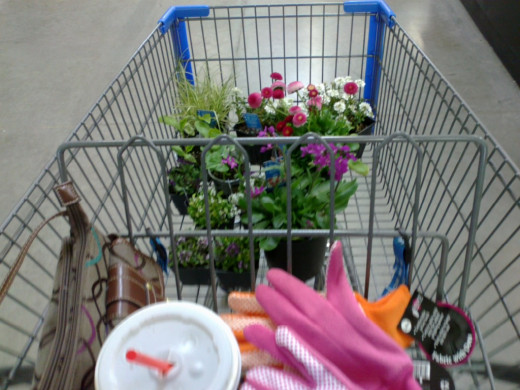
Shopping for the Bedding Plants: Cucumbers and Alyssum
When I first began gardening, I would buy the bedding plants before I worked the ground. Because I was always such a Busy Girl, I thought it would save time. What usually happened, though, was both a money and time waster, because something else would take priority and then I would forget to water the plants and they would die before I could get them into the ground.
Now I do not shop for the plants until after the ground has been turned, raked, and smoothed. I make one short trip to get the plants because I already know what I am going to pick up at the local garden center.
Placement of Garden Plants
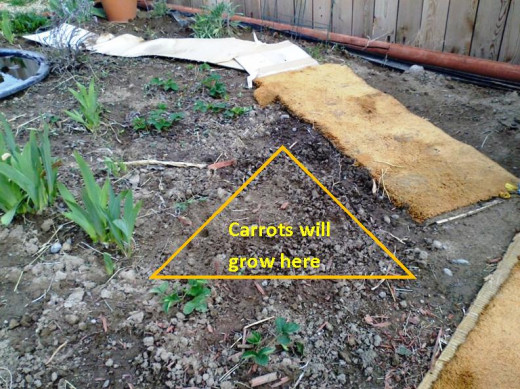
Press Seeds Into the Soil
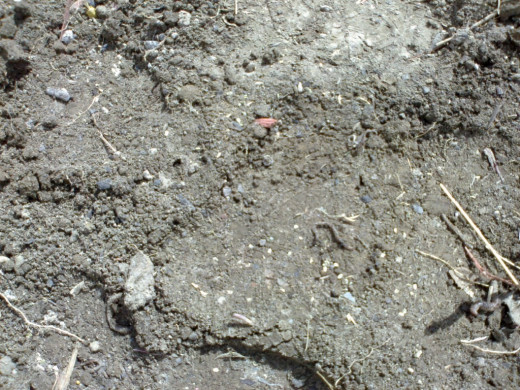
How This Garden Area Looked Last Year
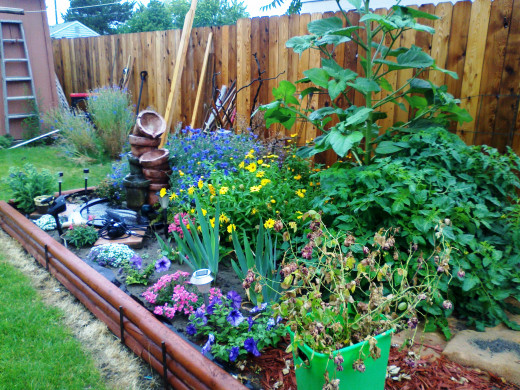
Planting the Carrot Seeds
The carrot seed will be planted in a small block by the strawberries. The shape will be irregular, to make it look more natural as it is growing. Because the carrots grow taller than the strawberries, and have frothy, fern-like tops, they will make an interesting height and texture focal point in the garden if they grow.
Carrots like cool weather for sprouting the seeds, and they need to be kept damp until they are established. Remember to water these seeds with a fine spray, and do it often for short peirods of time. The goal here is to keep only the top couple of inches of soil damp. Using too heavy a spray, or giving the seeds too much water may wash the seeds away or cause them not to sprout.
Hopefully the strawberries and carrots will make good garden friends. With the addition of the carrots by the berries, and the alyssum around the front of the pond, this area is just about complete.
Color Scheme. When everything gets going, there will be a fairly tall backdrop of deep blue bachelor buttons that get lighter in color as they fade. The sage plant has a moss green color and gets light purple flowers in the summer. The strawberries have deep green leaves and little white blossoms that continue throughout the season. The irises are a pale purple yellow bearded style and the foliage will double in size providing a medium height texture. Interspersed later in the summer will be bright yellow and orange calendulas that always come up from seed dropped the year before. The alyssum rounds it all out with puffs of white and varying shades of purple in the front These low growing plants look like puffs of cotton candy after about 40 days, which would be mid-May.
Bush Bean, Cucumber, and Corn Placement in the Garden
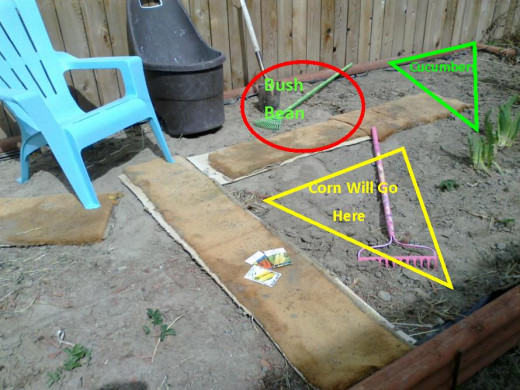
Get Garden Stuff Here
Plant Corn Seed
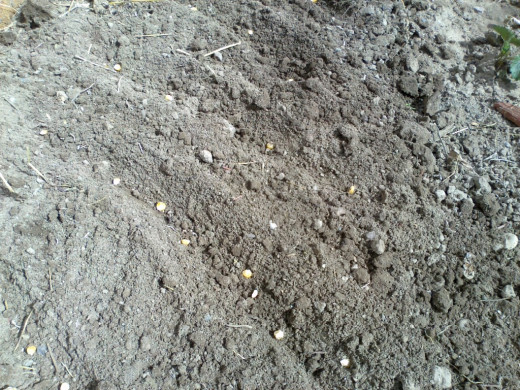
Planting the Corn, Cucumber and Bush Beans
As you can see by the garden diagram image at your right, there is just enough room to plant these three vegetables.
Growing Requirements. The beans and corn like the sun but need plenty of water while they are producing. Sitting back in the corner, the cucumber plant will get a break from the hot summer sun, but still have enough afternoon light to grow well. Its vines will spread out and seek the sun. This also helps to create a natural weed barrier later in the summer. If the plants get too big, I can always pull out a little corn or trim off a cucumber vine. It will just make a new one.
Protect Plants From Frost. In this area, it is possible to get a few more mild frosts. Because the bush beans can be damaged by the frost, it is important to cover them at night with a cardboard box, milk jug with the bottom cut off and the lid removed, or even a sheet of plastic. Any item will do. For now I will use a small cardboard box for the beans.
Since the corn has not sprouted yet, I should not have to worry about covering it because by the time it does sprout, the temperature should be warmer at night.
Irrigation of The Garden. Because the cucumber is sheltered from the hottest month of the year, it will be sure to get the moisture it needs when the sun is hot. The sprinkler is position at the edge of the bed just behind it. It works out well because the spray will go over the cucumber and reach the bush bean and the back half of the corn.
Garden Color Scheme. In this section of the garden, there will be lots of variation in the green tones of the foliage. Two different varieties of corn seeds were planted, and the heights of the corn stalks will vary adding texture and dimension. The cucumber blossoms on the vines will vary in shades from pale green to yellows. The two strawberry plants will have white blossoms and the iris plants are the purple and yellow bearded variety.
It doesn't look like much now, but with the addition of the bedding plants, as you see below in the progress check photo, the design and vision for this garden are taking shape.
Garden Progress After Day Two
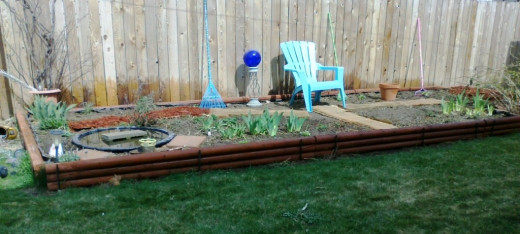
Was This Information Helpful?
Garden Project Progress Check
In the garden recap photo you will see how the garden looks now. The time spent working wasn't too difficult, and the tasks were all pretty easy to do. I was able to enjoy my Saturday and get my garden set for the year.
From this point forward all I will spend in this garden is just a few minutes every day for the next three weeks, spraying the seeds and using the hoe to keep unwanted weeds and volunteer flower seeds at bay. This entire bed can be hoed in only 15 minutes, and the water spraying only takes about 5 minutes. Since it only needs hoed a couple times a week, this is very easy maintenance.
When the seeds come up, the plants can be watered with a sprinkler and the maintenance time goes down a little more.
By mid summer there will be almost no weeding and hoeing to do, and this garden will be practically maintenance free for a few weeks.
The colors and textures should all work well together, and the various heights of the plants will hopefully add interest and beauty to the garden space.
To find the right planting and growing times for your area, see the handy new map provided by the Department of Agriculture below.
USDA Growing Zones for Your Area
- USDA Plant Hardiness Zone Map
This interactive map allows you to easily find the growing zone for your area. Then you will know when to plant your seeds and bedding plants.
More Colorful Gardens: Using Alyssum for Colorful Plant Texture
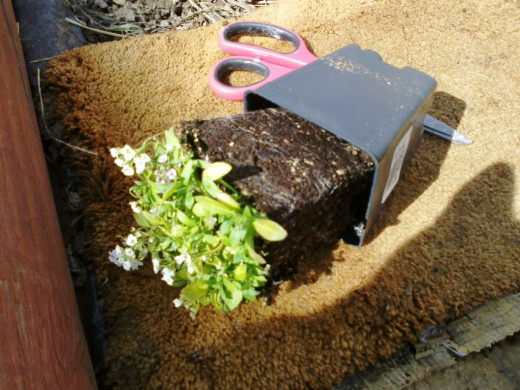
© 2014 Nancy Owens
